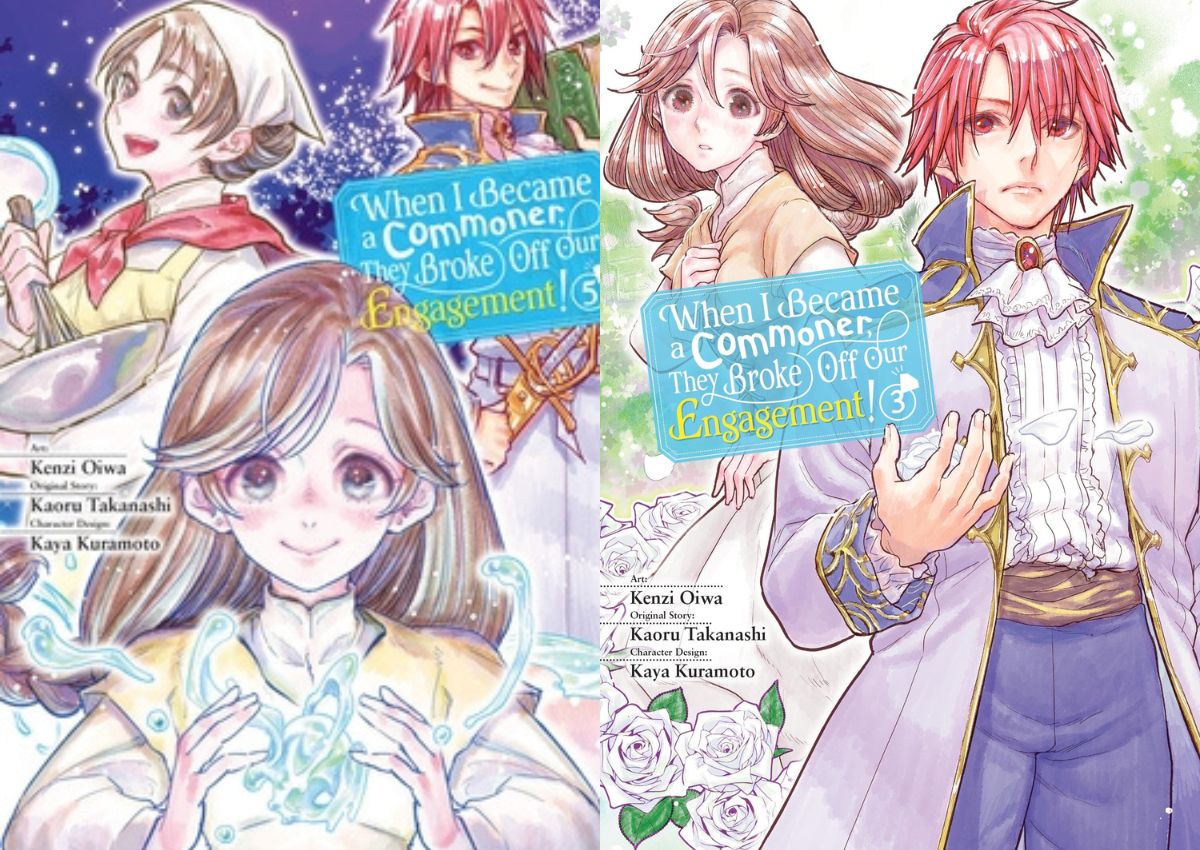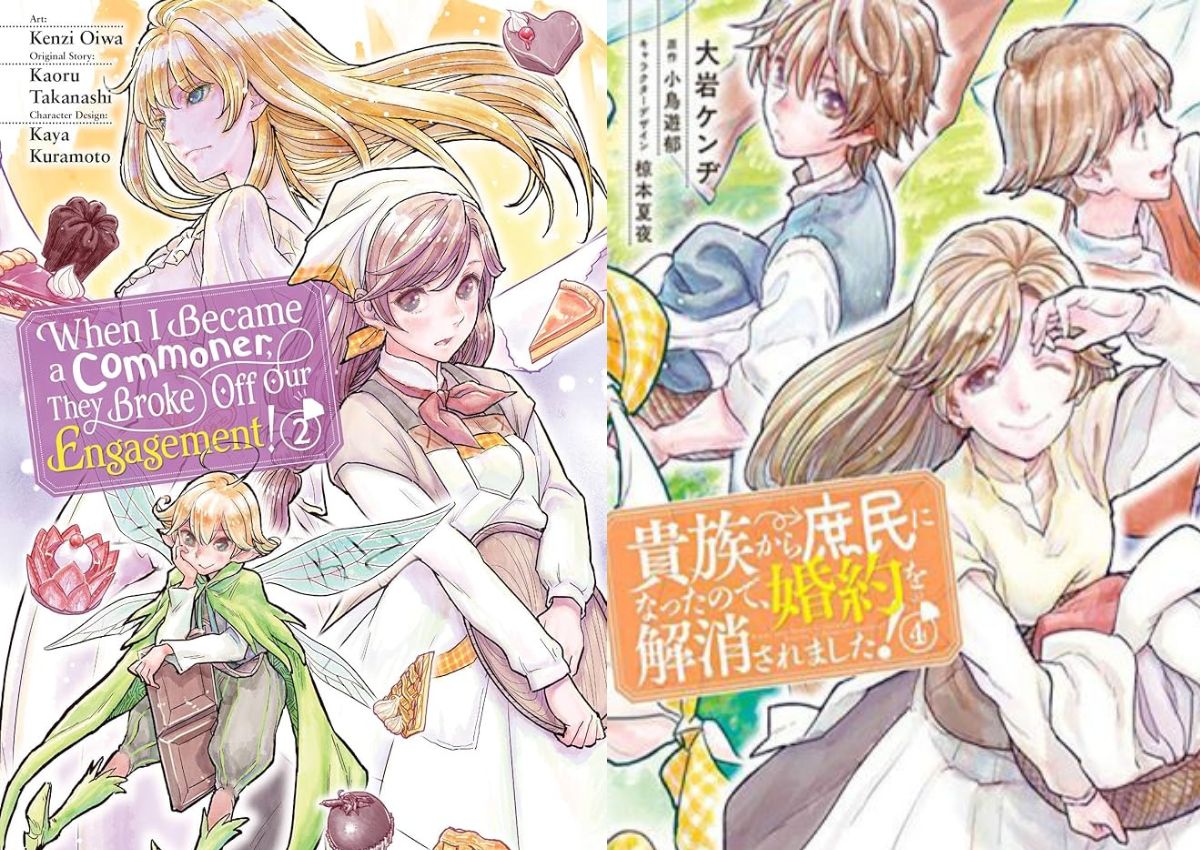In the vast landscape of manga, When I Became a Commoner, They Broke Off Our Engagement! stands out as a poignant exploration of identity, family, and social divides. Available on ComicK, this series invites readers into the life of Anna, a young woman caught in a web of secrets and misunderstandings after a fairy’s prank turns her world upside down.
Beyond its fantasy premise, the manga delves deeply into the emotional turmoil of belonging and rejection, crafting a story that resonates with anyone who has ever struggled to find their place. For fans seeking a narrative rich in character growth and social insight, this manga promises a compelling journey worth following.
A Poignant Tale of Identity and Acceptance on ComicK
At first glance, When I Became a Commoner, They Broke Off Our Engagement! might appear as a typical fantasy romance with a fairy tale twist. However, beneath its magical premise lies a deeply moving exploration of identity, class struggle, and the human need for belonging.
Available on ComicK, this manga introduces readers to Anna’s world—a life fractured by a fairy’s prank that swaps her true place in society. What follows is an emotional journey about finding self-worth beyond birthright, and the painful consequences when society refuses to accept you for who you truly are. This story is more than just a fantasy drama; it’s a mirror reflecting timeless questions about family, loyalty, and the rigid barriers that divide us.

The Core Conflict: A Baby Swap with Lasting Impact
The story’s core revolves around the age-old trope of switched identities, but it’s handled with nuanced emotional weight here. The fairy’s decision to swap two human babies a commoner and a noble sets off a chain reaction that shapes Anna’s entire existence.
Raised among nobility, Anna never quite fits in; her unique magic, different hair, and eye color spark suspicion and gossip that isolate her emotionally. This foundational conflict resonates beyond fantasy, symbolizing real-world issues of social exclusion and inherited privilege.
The manga uses this device not just as a plot point, but as a lens to examine how deeply family and society can reject someone for being “different,” even when the truth is beyond their control.
Anna’s Personal Growth: Navigating Between Two Worlds
Anna’s character development is the emotional heartbeat of the series. Her journey begins in loneliness and confusion she’s a noble in name only, burdened by whispers and the cold distance of her peers. The scene where she breaks down in the garden reveals her vulnerability and longing for acceptance.
Her bold pact with a fairy to learn magic and the realities of commoner life signals a turning point: Anna refuses to be a passive victim of fate. Instead, she actively seeks knowledge and skills that might help her survive in a world that might soon reject her.
This transformation is rich with symbolic meaning learning commoner crafts like cooking and sewing becomes a metaphor for reclaiming control and forging an identity that isn’t defined by nobility or bloodline. The manga carefully traces this growth with emotional subtlety, emphasizing internal struggles as much as external challenges.
Complex Family Dynamics: Loyalty, Betrayal, and Prejudice
Family relationships in this manga are anything but simple. Anna’s brother Henry emerges as a rare ally, offering the only genuine support in a household rife with judgment and cold politics. Meanwhile, Anna’s engagement to Ed adds layers of emotional tension; his reactions and loyalties are critical in a story about trust and societal expectations.
The eventual revelation of the baby switch and the broken engagement serve as a devastating climax in volume one, laying bare the harsh realities of class prejudice and the fragility of familial love when confronted with social scandal. Through this dynamic, the manga prompts readers to reflect on how much of family bonds are conditional on status and perception.
It raises compelling questions: Can love and loyalty survive when identity is challenged? What costs come with societal rejection? The storytelling carefully balances empathy and critique, making these relationships complex and heartbreakingly real.
World-Building and Social Commentary: Magic Meets Class Divide
The manga’s world-building enhances the story’s thematic depth by contrasting magical nobility with the earthy realities of commoner life. Anna’s efforts to master practical skills not only prepare her for survival but highlight the stark differences between the gilded halls of nobles and the often harsh, pragmatic world of common folk.
This juxtaposition isn’t merely aesthetic it speaks to entrenched social divisions and the prejudices that come with them. The narrative invites readers to consider how societal roles are imposed and the impact of those roles on individual freedom. Through Anna’s eyes, we witness the unseen struggles of commoners, often overlooked in tales of nobility.
As the story unfolds, readers can expect the manga to delve deeper into these cultural contrasts, making it a rich source for fans who appreciate layered world-building with meaningful social critique.

Artwork: Beauty and Emotion in Every Panel
Visually, When I Became a Commoner, They Broke Off Our Engagement! impresses with its delicate and detailed artwork, which perfectly complements the story’s emotional tones. The artist’s attention to the intricate details of noble attire elaborate dresses, jewelry, and luxurious surroundings immerses readers in Anna’s privileged yet isolating world.
Meanwhile, softer, more understated backgrounds shift focus onto characters’ faces, emphasizing subtle expressions that reveal hidden feelings fear, longing, defiance. This visual style enriches the storytelling by inviting readers to read between the lines of dialogue, detecting emotions that words alone might not convey.
The contrast between opulence and simplicity in art mirrors the story’s exploration of social divides and personal transformation, making the manga an aesthetic and emotional experience.
Audience and Appeal: Who Should Read This Manga?
While the story features a teenage protagonist, the themes and emotional depth make this manga suitable for mature tweens, teens, and even adult readers who enjoy thoughtful fantasy with a social conscience. Its focus on personal identity, family conflict, and class issues adds layers that resonate beyond a simple romantic or magical story.
Fans of character-driven narratives that blend fantasy with social commentary will find this series compelling. For libraries and collectors, it represents a valuable addition that sparks conversation about privilege, prejudice, and self-discovery in a fantasy setting. The series is especially recommended for readers who appreciate slow-burn storytelling rich in emotional nuance rather than fast-paced action.
A Promising Journey of Self-Discovery and Social Critique
When I Became a Commoner, They Broke Off Our Engagement! is more than a tale of romance and magic it’s a heartfelt exploration of identity, belonging, and the barriers that society erects. The first volume sets up a compelling conflict and emotional landscape, promising a story that will grow in complexity and emotional resonance.
Readers who value nuanced characters and socially reflective storytelling will find much to admire here. As the series continues, it will be fascinating to see how Anna reconciles her past and future while navigating a divided world making this manga a standout in the genre and a worthy pick on platforms like ComicK.
